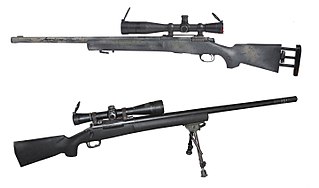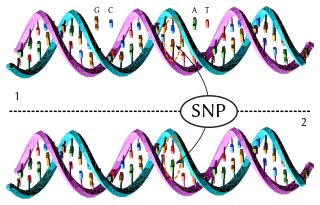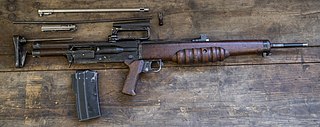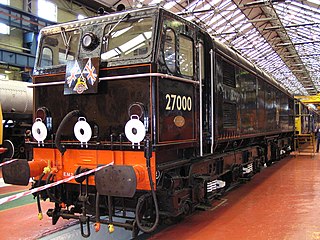A carbine, from French carabine, is a long gun firearm but with a shorter barrel than a standard rifle or musket. Many carbines are shortened versions of full-length rifles, shooting the same ammunition, while others fire lower-powered ammunition, including types designed for pistols.

An electromagnetic field is a magnetic field produced by moving electrically charged objects. It affects the behavior of non-comoving charged objects at any distance of the field. The electromagnetic field extends indefinitely throughout space and describes the electromagnetic interaction. It is one of the four fundamental forces of nature.
The FAL is a battle rifle designed by Belgian small arms designer Dieudonné Saive and manufactured by FN Herstal.

A battalion is a military unit. The use of the term "battalion" varies by nationality and branch of service. Typically a battalion consists of 300 to 800 soldiers and is divided into a number of companies. A battalion is typically commanded by a lieutenant colonel. In some countries, the word "battalion" is associated with the infantry.

In military terminology, a squad is a sub-subunit led by a non-commissioned officer that is subordinate to an infantry platoon. In countries following the British Army tradition, this organization is referred to as a section. In most armies, a squad consists of eight to fourteen soldiers, and may be further subdivided into fireteams.

A sniper rifle is a high-precision rifle designed for sniper missions. It serves to fulfill the tactical need for long range surveillance, effective anti-personnel and anti-materiel operations with a high hit probability, and can be used by military, law enforcement and civilian militias. The modern sniper rifle is a portable shoulder-fired weapon system with a choice between bolt-action or semi-automatic action, fitted with a telescopic sight for extreme accuracy and chambered for a high-ballistic performance centerfire cartridge.

A haplotype is a group of alleles in an organism that are inherited together from a single parent. However, there are other uses of this term. First, it is used to mean a collection of specific alleles in a cluster of tightly linked genes on a chromosome that are likely to be inherited together—that is, they are likely to be conserved as a sequence that survives the descent of many generations of reproduction. A second use is to mean a set of linked single-nucleotide polymorphism (SNP) alleles that tend to always occur together. It is thought that identifying these statistical associations and few alleles of a specific haplotype sequence can facilitate identifying all other such polymorphic sites that are nearby on the chromosome. Such information is critical for investigating the genetics of common diseases; which in fact have been investigated in humans by the International HapMap Project. Thirdly, many human genetic testing companies use the term in a third way: to refer to an individual collection of specific mutations within a given genetic segment;.
L1, L01, L.1, L 1 or L-1 may refer to:

The EM-2, also known as Rifle No.9 Mk1 or Janson rifle, was an experimental British assault rifle. It was briefly adopted by British forces in 1951, but the decision was overturned very shortly thereafter by Winston Churchill's incoming government in an effort to secure NATO standardisation of small arms and ammunition. An innovative weapon with the compact bullpup layout and an optical sight, it used one of the early intermediate cartridges as a result of combat experience and German advances in weapons design during World War II.
The L64 was an intermediate calibre British bullpup layout prototype assault rifle developed in the 1970s. At one time it was known as the 4.85 Individual Weapon, a reference to the calibre of the bullet it fired.

The British Rail Class 76, also known as Class EM1, is a class of 1.5 kV DC, Bo+Bo electric locomotive designed for use on the now-closed Woodhead Line in Northern England.

The British Rail Class 77, also known as Class EM2, is a class of 1.5 kV DC, Co-Co electric locomotive. They were built by Metropolitan-Vickers in 1953–1954 for use over the Woodhead Line between Manchester and Sheffield.

Co-Co is the wheel arrangement for a diesel locomotive with two six-wheeled bogies with all axles powered, with a separate traction motor per axle. The equivalent UIC classification (Europe) for this arrangement is Co′Co′ or C-C for AAR (USA).

Haplogroup M, also known as M-P256 and Haplogroup K2b1b is a Y-chromosome DNA haplogroup. M-P256 is a descendant haplogroup of Haplogroup K2b1, and is believed to have first appeared between 32,000 and 47,000 years ago.
The origins of the modern British military rifle are within its predecessor the Brown Bess musket. While a musket was largely inaccurate over 80 yards, due to a lack of rifling and a generous tolerance to allow for muzzle-loading, it was cheaper to produce and could be loaded quickly. The use in volley or in mass firing by troops meant that rate of fire took precedence over accuracy. A similar tactical preference would be a factor in considerations regarding rifle design in the late 19th century to early 20th century, when rate of fire would be a key design consideration for British bolt-action rifles.
A is the first letter of the Latin and English alphabet.
The genetic history of the British Isles is the subject of research within the larger field of human population genetics. It has developed in parallel with DNA testing technologies capable of identifying genetic similarities and differences between populations. The conclusions of population genetics regarding the British Isles in turn draw upon and contribute to the larger field of understanding the history of humanity in the British Isles generally, complementing work in linguistics, archeology, history and genealogy.

The Asteroid Redirect Mission (ARM), also known as the Asteroid Retrieval and Utilization (ARU) mission and the Asteroid Initiative, was a space mission proposed by NASA in 2013. The Asteroid Retrieval Robotic Mission (ARRM) spacecraft would rendezvous with a large near-Earth asteroid and use robotic arms with anchoring grippers to retrieve a 4-meter boulder from the asteroid.
The term EM1 may refer to :
The term EM3 may refer to :









